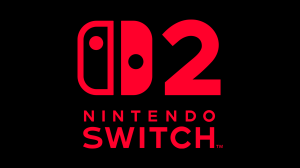Tapestry, the new tabletop game by Stonemaier Games, is one of the few tabletop experiences that could benefit from a more robust rulebook. Tapestry is a medium-weight civilization building game in which players try to outscore their opponents as they grow their civilization from the creation of fire to interstellar travel. While the game features multiple boards, over a dozen unique civilizations (each of which has their own unique abilities) and several unique buildings that can be obtained by reaching certain goals, Tapestry‘s turns are actually quite simple – players either advance their token along one of four tracks by paying a resource cost, or take an income turn that generates additional resources. The main issue with Tapestry isn’t the actual mechanics of the game, which are uniquely clever, but rather the over-simplified rulebook.
Videos by ComicBook.com
In Tapestry, most turns will be spent advancing along one of four advancement tracks, each of which represent a different way a civilization grows. The exploration track grows the board by adding new tiles to the main board, the military track allows players to expand their influence on these tiles, the technology track adds technology cards that can eventually be upgraded and provide additional benefits to a player, while the science track allows players to advance along one of the other tracks without paying the resource cost.
Over time, players will also add buildings from their income mat to their grid-like capital city map (shown below). Placement of these buildings are actually important – filling a full row of the map earns players Victory Points during each Income turn, while filling a 3×3 square on the capital city mat gives players a free resource. Each Capital mat is different and has different areas where players can and can’t build – this means that if players gain a unique building (earned by being the first to advance along a certain part of the track or via a technology card), they need to be strategic as to where to place it. Do you leave a space open for a large building and simply hope that you earn it before another player, or do you sacrifice a chance to fill up your board in the name of playing it safe?

When a player runs out of resources, they take one of their five Income turns, which replenishes their resources, allows them to play Tapestry cards that customize their civilization and grants them extra benefits, and gives the player victory points for reaching certain criteria. Once a player takes their fifth and final Income turn, their game is over.
Each track is represented on the main board, with symbols that represent what players should do when they advance along the track. Some of these symbols are represented in the rulebook, while others are explained in a separate full page reference sheet. Here’s where the main problem of Tapestry sets in – that rules reference sheet is critical to understanding how the game works, mainly because the rulebook is only four pages long. If you only read the rulebook (which has a page dedicated to setup, a page explaining how the turns work, a page explaining some core actions, and then a page explaining how the capital city mats work along with a few hints and notes), Tapestry seems like a simple game in which players tend to repeat the same actions over and over. However, each advancement track space has its own unique actions to complete, and the rulebook simply falls short of adequately explaining how the they work.

While its admirable that Stonemaier Games wanted to keep the rulebook for Tapestry short and sweet (a principle that more board game publishers should strive for), I think a lot of frustration some players will experience when sitting down to play this game would have been prevented by a little more explaining within the rulebook. Because of the game’s over-simplified rules, I felt that the first few rounds of the game feel directionless as new players stumble about trying to understand how anything works or if there’s any real benefit to pursuing one advancement track over another. Personally, I enjoy that exploration of piecing together a game, but in two of my initial playthroughs, I had a player who got frustrated and confused about the lack of concrete goals. It doesn’t help that Tapestry‘s Victory Points are scored in relatively tiny chunks – outside of the last couple of Income turns, players tend to score less than 10 Victory Points per turn – so it can be hard to tell how well a player is actually doing, even if they are in the lead.
As someone who picks up on games quickly, I enjoyed Tapestry and found it to be a very intriguing game that’s a bit more complex than the typical civ or engine builder game but didn’t overwhelm me with too many steps or choices. The game’s components are also absolutely top-notch – Stonemaier Games knows how to nail the presentation of a game and the high quality pieces make the $99 retail price completely understandable. And with the different Tapestry cards and civilization choices, Tapestry has a lot of potential replayability as long as you don’t get too frustrated during that initial playthrough as you stumble along trying to figure out how everything works. Tapestry is a game that should grow on your gaming group, particularly if they’re looking for a game that finds a balance between simple turns and complex interactions.
Tapestry will be available in November 2019.
Rating: 3 out of 5









